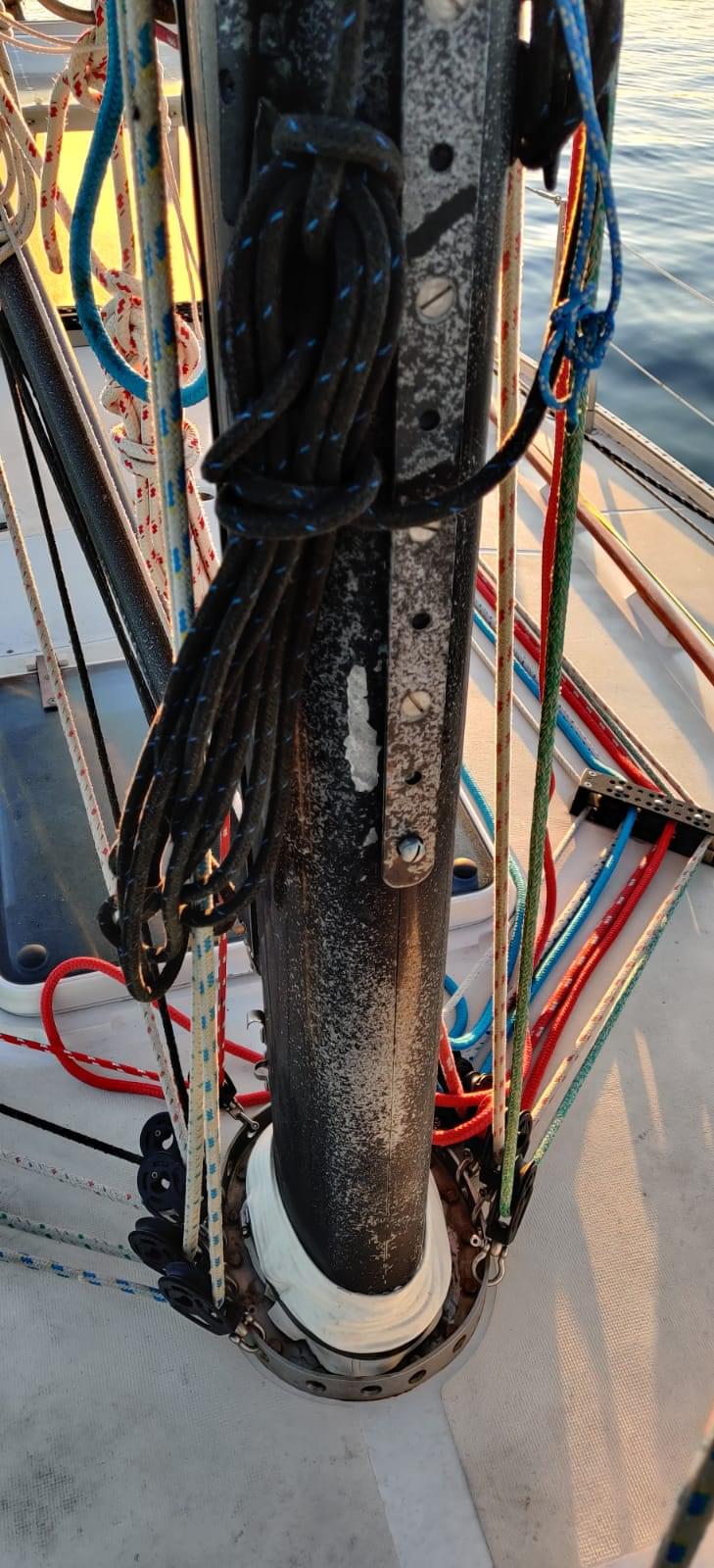I claim that the answer is "Yes"!
For foreign readers: being salty is synonym of being a seasoned sailor in (American?) English.
Our impression of this Pacific Coast, on the winter at least, is that you either get no wind or too much wind. The good weather windows are fairly calm as we set sail after the storms. That was the case in Morro Bay, when we delayed our departure to avoid gale force winds in Southern California; that was true once more as we had to wait out another storm while in Redondo Beach.
The boat was not at a dock, but at a mooring with other boats moored or anchored near by. Therefore, we preferred staying on the boat in case anything went wrong and we had to react fast. So we got everything ready: the "new" dinghy (we recently refitted it after finding it by the marina trash) in the water with a working engine (brand: Mercury, named Freddy on the day of purchase!), beefed up our morning lines and set up our double-berth in the main saloon for the first time, as the V-berth was still smelling strongly like varnish...
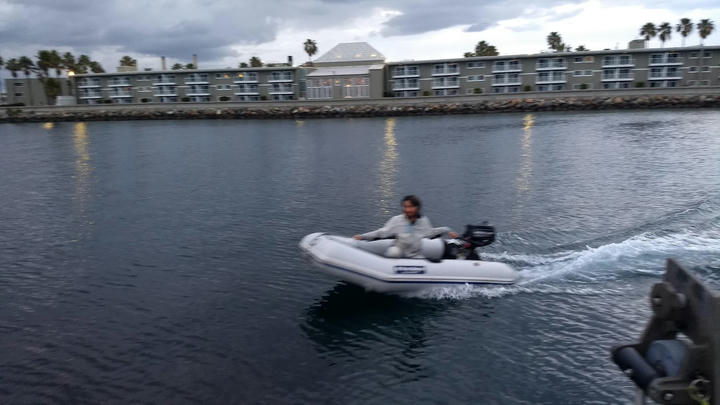
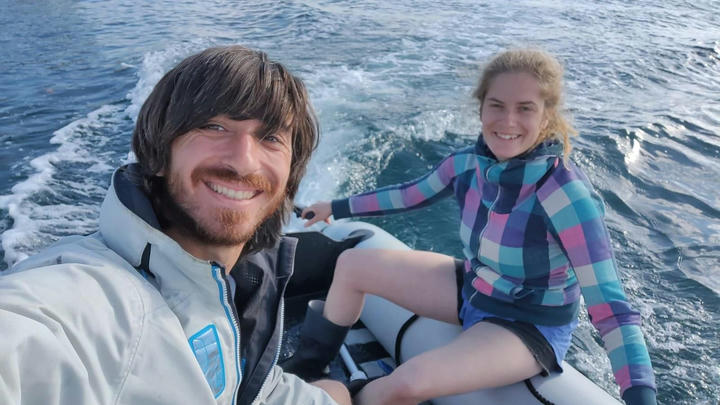
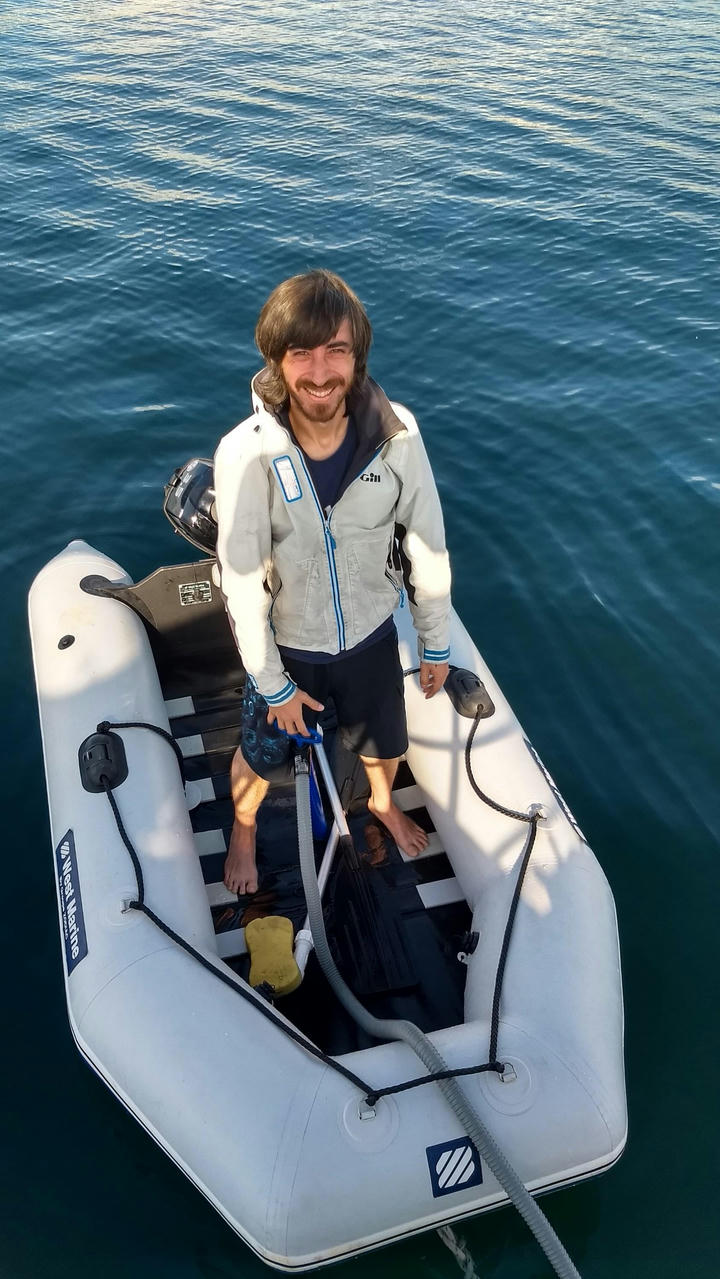
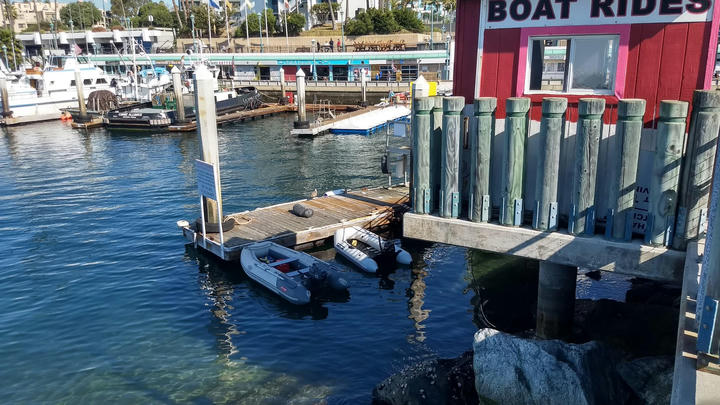
It felt surprisingly good to be back on the boat after only a couple of days on land. I guess it's really our home by now!
The afternoon had been beautiful, but as the sun was setting, the wind was already picking up. Nice food involving butternut squash and linguine pasta and we were ready to watch Avatar in our comfy living room while boat sitting.
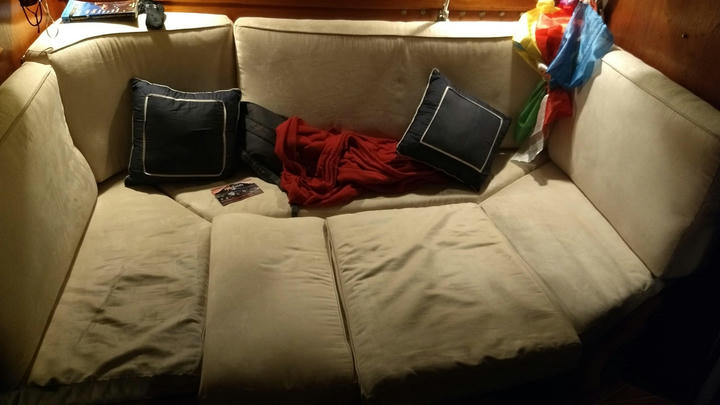
It's not until later in the night though that the wind picked up seriously, with more than 30 knots sustained, sometimes 35, and gusts at 40! Impressive! The boat was moving between the two mooring balls, aligning to the changing wind and heeling over in response - almost enough to make us sea sick, in the harbor!! We would still feel the spray from the outside waves breaking on the sea wall. So glad to be on that side of the wall! The boat rig came alive, as it was impossible to tension the halyards enough to resist the gale force winds. Bouchon the dinghy tried to take off and plane away before we moved it to the stern of the boat which offered a little more protection from the wind.
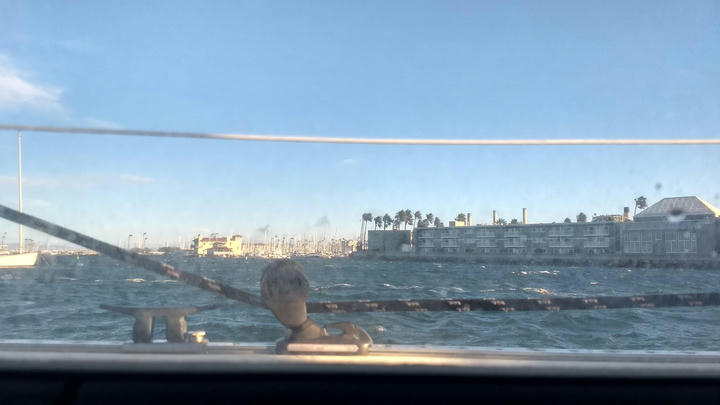
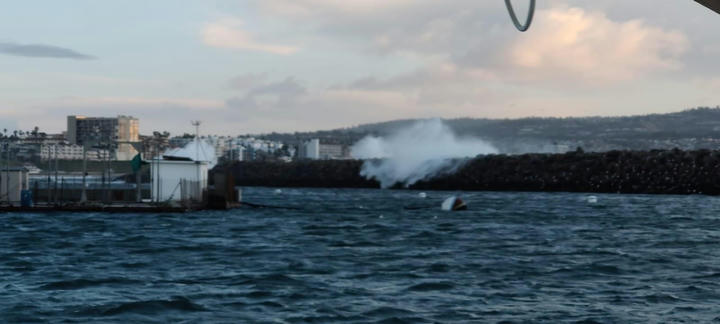
Not the best to sleep but we eventually passed out, reassured that the noises were not going out of control, that the other boats seemed to hold their grounds as well as Tire Bouchon. We had another day and night to wait out in these conditions anyway, so nothing against snoozing a little the next day.
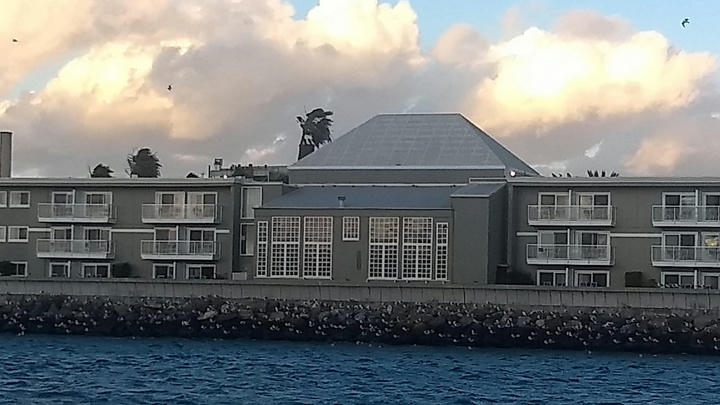
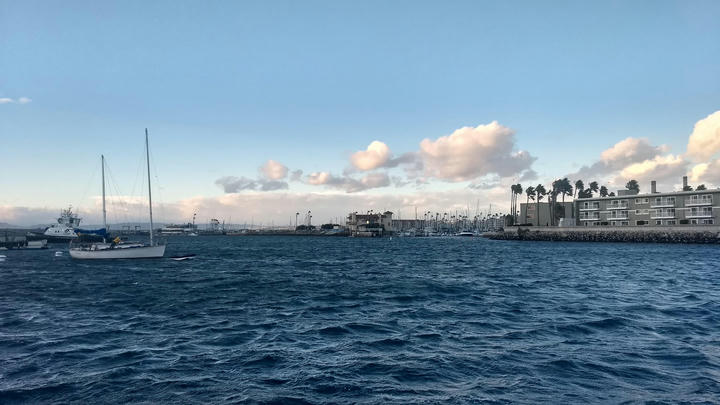
The day ended up not being as windy as the nights (or perhaps we got more resilient). We used it to catch-up on administrative stuff: immigration to Mexico, exiting from the US properly - this was our first time leaving and entering a country by sea on our own after all! Yalçın found the time to study the Baja California Coast, which was next but still a big unknown. Are there good anchorages along the coast for us to stop between the fairly spaced out harbors? Are some of these anchorages protected against the violent south winds such as the ones we were experiencing at that time? What was the bottom like, would our anchor hold? (It had proven to be badass on muddy bottoms, especially without wave action.) So many things to anticipate, plan and study... Not the picture that most people have in mind when sailing comes up, right? We are more on drinking cocktails on a spacious deck in calm seas... We may get there, but we probably need a good anchorage for that; hence we study the coast!
When the storm finally passed after the second night, we found the boat covered in salt! No exaggeration! Every surface you would hold on to had the white grains!
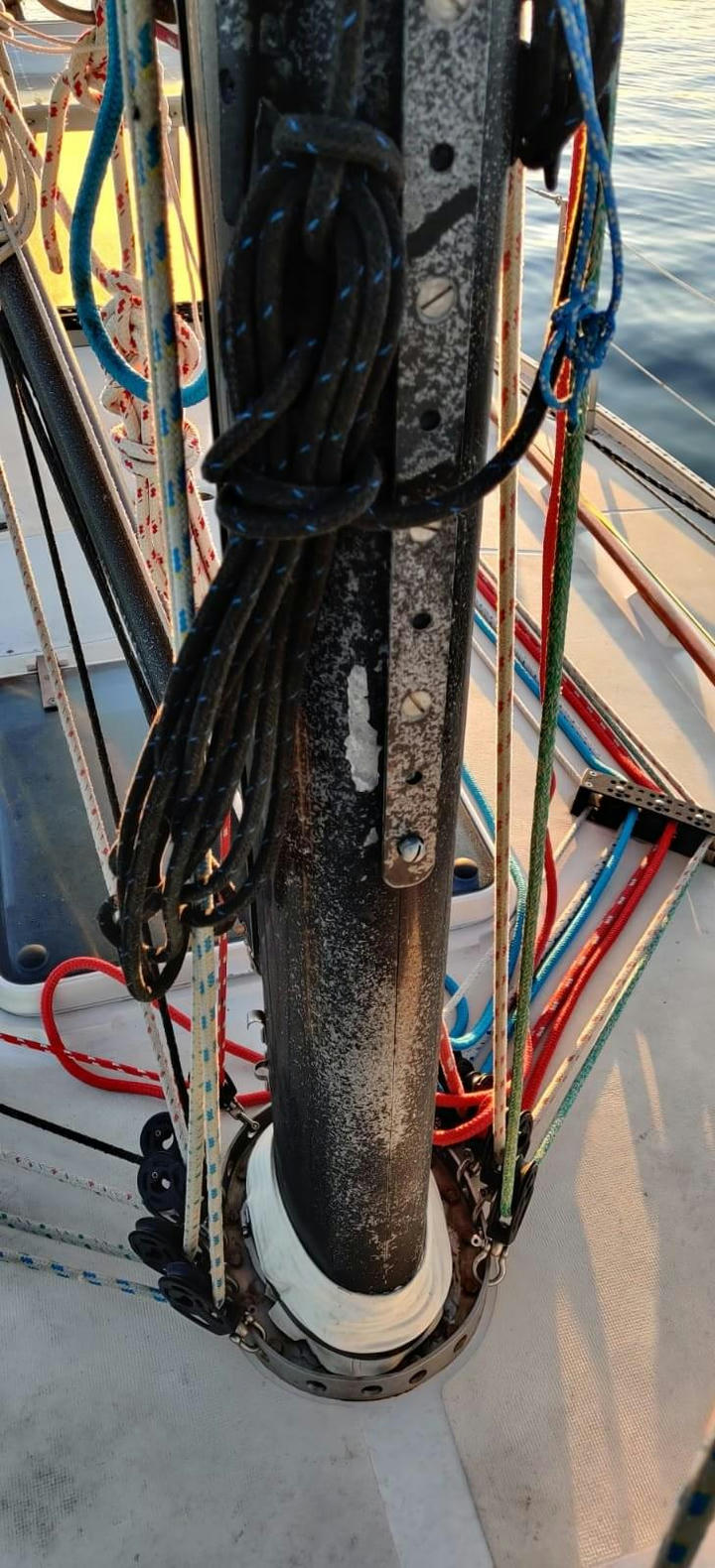
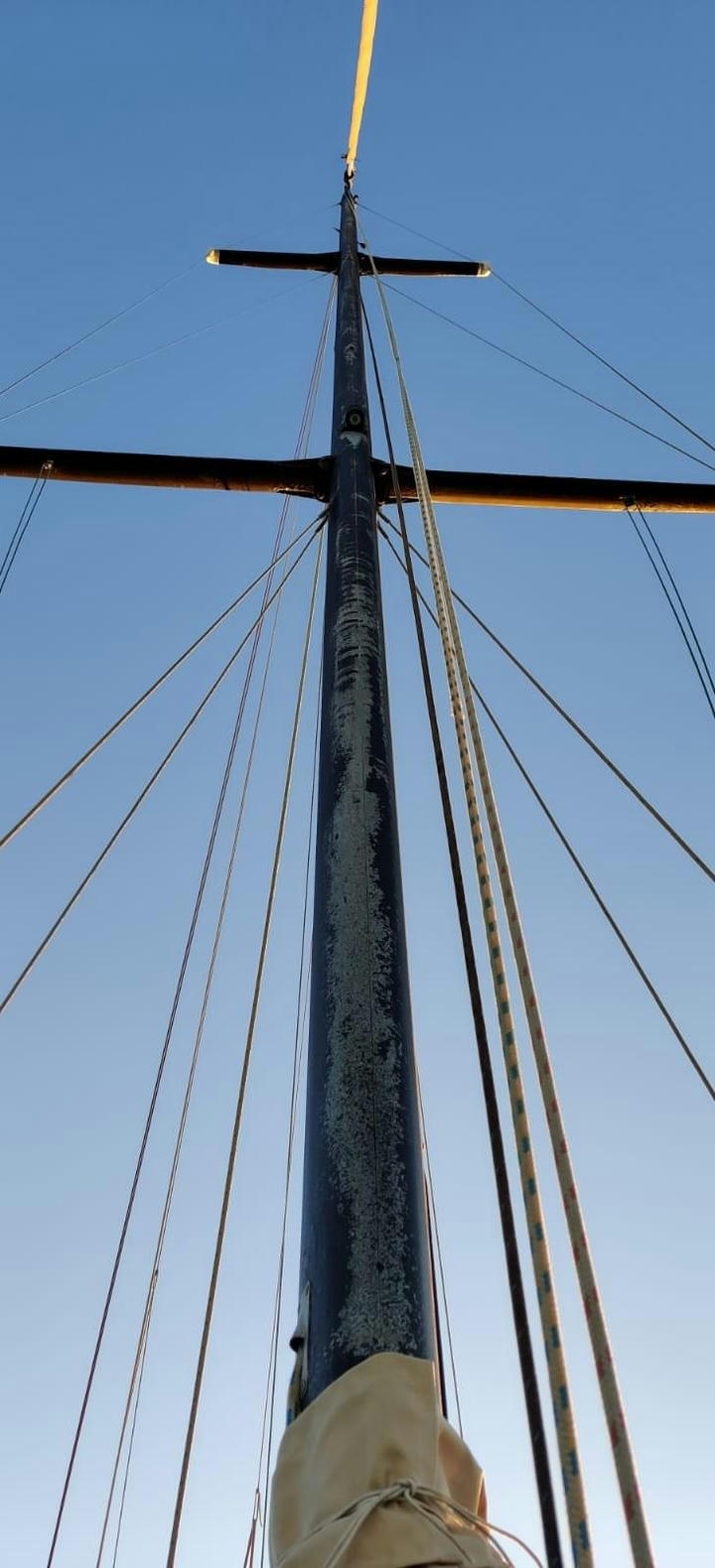
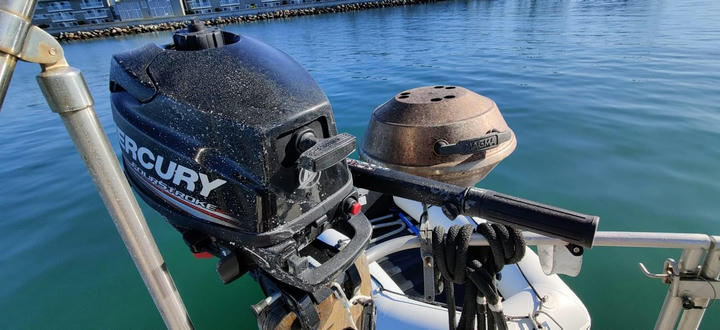
A louder sound at dawn made us worried about something breaking loose - the front mooring line?! No, everything looked good over there and the boat had stayed in place. However, with a second pair of eyes, we were able to identify that the shackle hauling our jib down on the forestay had simply disappeared!
To that day, it's still a little mysterious as it seems unlikely the wind would break a metal piece that wasn't in a particularly bad shape. A more reasonable theory would be that the shackle got loose with the vibrations of the engine and was already coming off, the wind just speeding the final step. Either way, no one but the gale that blew that night will ever know... It almost feels as if the Sea had to take something exchange of all the once precious salt she left us with.
